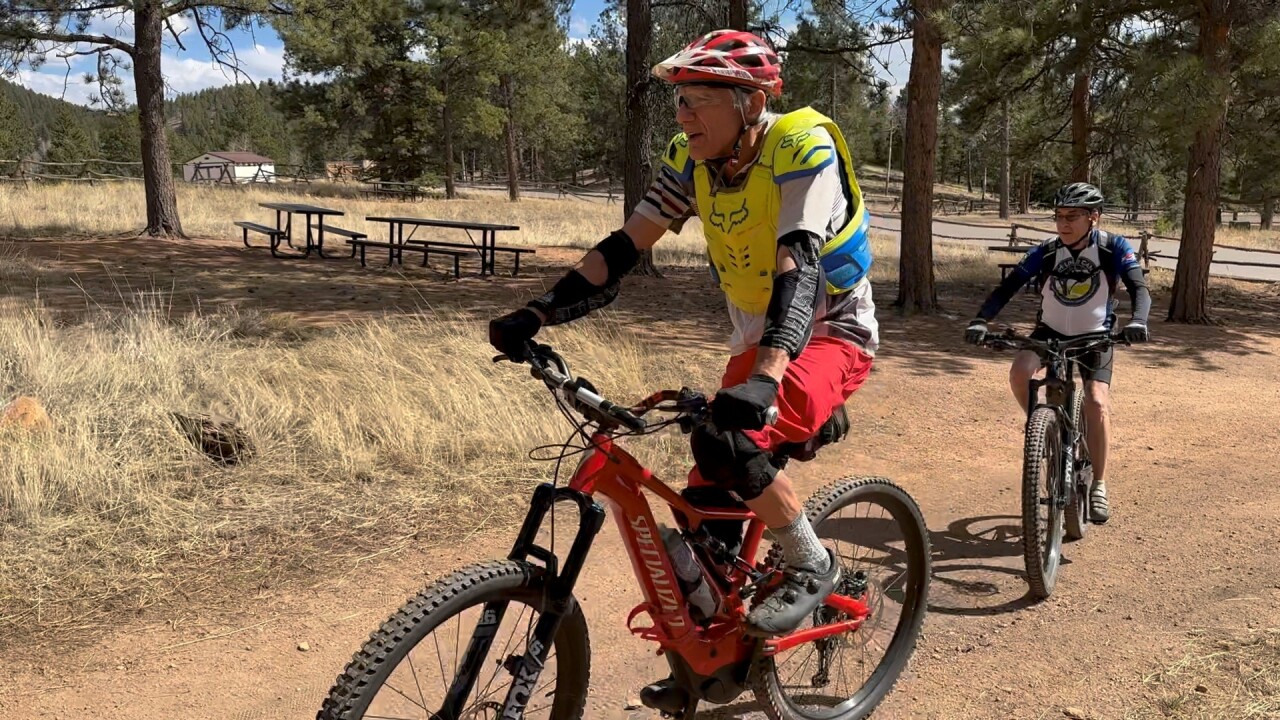CONIFER, Colo — E-bikes continue to skyrocket in popularity, leading to debates on where they should and shouldn’t be allowed.
Colorado state parks allow them on most trails, but U.S. National Forests mostly do not. This has led to confusion and frustration for some riders, including Richard Plastino, who reached out to Denver7 on the topic.
We met Plastino at Staunton State Park, one of his favorite places to ride his e-bike — and, now, a prime location for this issue.
Staunton State Park, like other Colorado state parks, allows e-bikes on almost all of its trails. Pike National Forest, however — which sits right next to Staunton State — does not.
Several trails in Staunton connect with trails in Pike National Forest, meaning e-bikers can start their journey on a trail where they are allowed, but find themselves in an area where they are not without realizing.
While there are signs at the border listing e-bikes as prohibited in Pike National Forest, Plastino argued they are too small and unclear to catch the attention of e-bikers passing by.
A representative from Staunton State Park confirmed the park has seen confusion among riders, and is now providing maps and education pamphlets on the border of the park regarding the varying rules.
“The only way you know you’re transitioning on the trail — because the trail looks identical — is there’s a little tiny sign [with] a silhouette of a bike with a plug coming out of it,” Plastino said. “The minute you cross over that line, [e-bikes] are prohibited for no other reason than they’re defined as a motor vehicle.”
Brendan Kelly, a U.S. Forest Service recreation program manager, confirmed e-bikes were classified as motor vehicles in a guidance issued last year. With this designation, e-bikes are largely only allowed on roads and trails in national forests where other motor vehicles, such as cars, are allowed. However, Kelly also explained that individual forests are able to further tailor their own rules, and expand e-bike access based on community input and specific environmental impact studies conducted.
“At any point in time, any national forest has the opportunity to go through a planning process if they feel like they want to update where e-bikes should be designated,” Kelly said. “If we get enough interest, that’s one thing that will trigger changing those. And then, we’re also assessing all the environmental impacts.”
Kelly said the penalty for riding an e-bike on a trail where it is not permitted could carry a $250 fine. However, the U.S. Forest Service’s primary focus is on education through warnings, Kelly said, especially for riders who may inadvertently cross into a national forest.
Plastino is hoping Pike National Forest, and others, will give e-bikes the green light.
“I would like to urge the Forest Service to do the studies necessary to make them legal,” he said. “I’ve observed it has no ill effects on the trails, and I think they should be allowed everywhere.”




